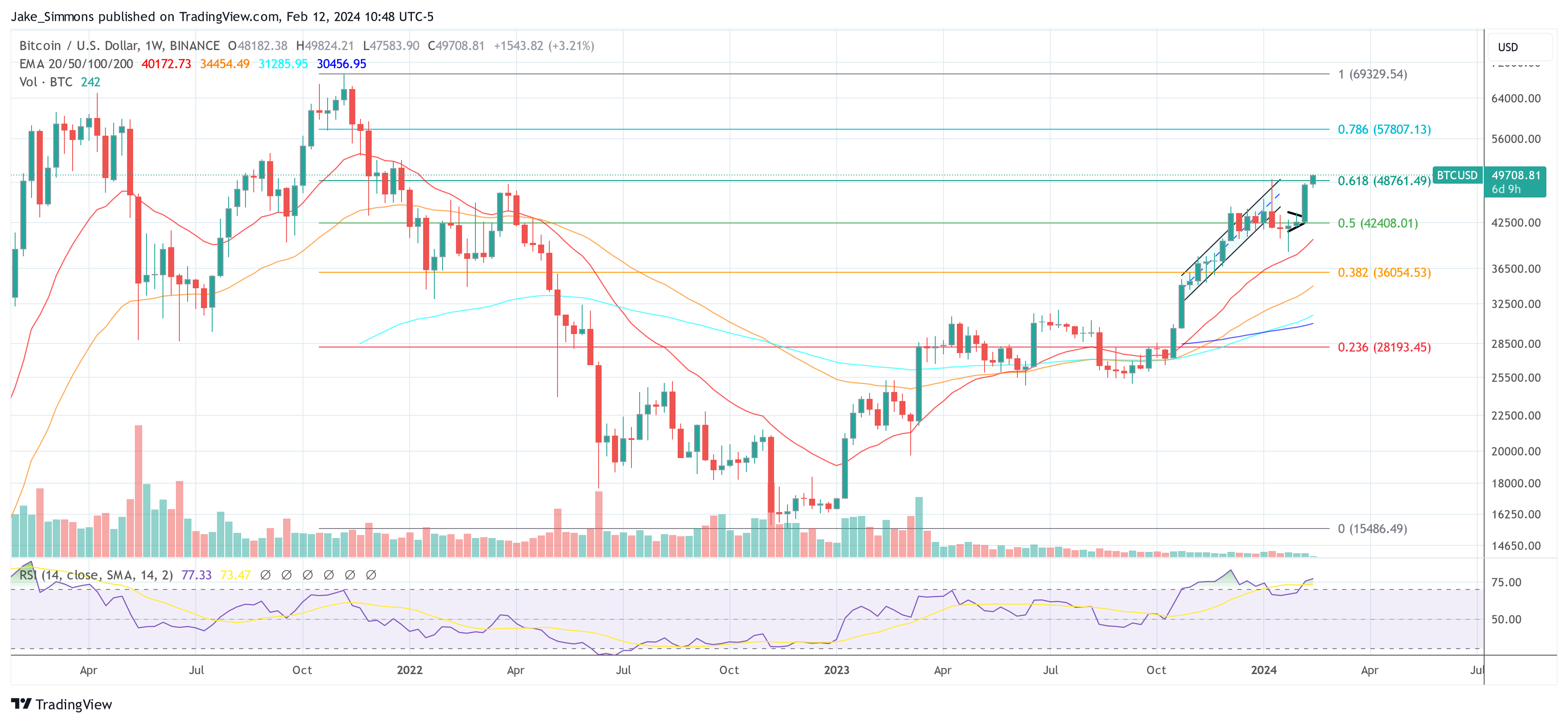In Grayscale’s latest report, ‘2024 Halving: This Time It’s Actually Different,’ Michael Zhao provides an in-depth analysis of the evolving dynamics within the Bitcoin ecosystem as the next halving approaches in mid-April 2024. The report argues for a significant departure from previous cycles, underlined by the advent of spot Bitcoin ETFs in the United States, changing investment flows and innovative use cases emerging within the Bitcoin network.
The essence of Bitcoin halvings
Halvings, intended to halve the reward for mining Bitcoin transactions every four years, are critical to maintaining Bitcoin’s scarcity and disinflationary profile. Zhao puts it, “This disinflationary feature is a fundamental attraction for many Bitcoin holders,” highlighting the stark contrast with the unpredictable supply of fiat currency and precious metals.
Despite historic price increases after the halving, Zhao cautions against taking such outcomes as guarantees. He states: “Given the highly anticipated nature of these events, if a price increase were a certainty, rational investors would likely buy in advance, causing the price to rise before the halving occurs.”
Distinguishing factors of the halving in 2024
Macroeconomic factors
However, according to Zhao, macroeconomic factors are different in every cycle, which has always pushed the BTC price to new heights. The researcher describes the 2012 European debt crisis as a major catalyst for Bitcoin’s rise from $12 to $1,100, underscoring its potential as an alternative store of value amid economic turmoil.
“Similarly, Bitcoin also indirectly benefited from the initial coin supply boom in 2016 – which saw more than $5.6 billion funneled into altcoins – pushing its price from $650 to $20,000 in December 2017. measures […] [drove] investors see Bitcoin as a hedge, whose price rose from $8,600 to $68,000 in November 2021,” said Zhao.
Thus, Zhao suggests that while halvings contribute to Bitcoin’s scarcity story, the broader economic context always has a critical impact on Bitcoin’s price as well.
Strategic adjustments of miners
Ahead of the next BTC halving in April, miners have been proactively adjusting their strategies to counterbalance the looming reduction in block reward revenue amid escalating mining woes. Observing a strategic move among miners, Zhao notes: “There was a noticeable trend of miners selling their Bitcoin shares off-chain in the fourth quarter of 2023, presumably to build liquidity ahead of the reduction in block rewards.
This foresight suggests that miners are not just reacting, but actively preparing to deal with the challenges ahead, ensuring the resilience of the network. “These measures collectively suggest that Bitcoin miners are well positioned to meet the challenges ahead, at least in the near term,” the Grayscale researcher argues.
The emergence of ordinal numbers and layer 2 solutions
The introduction of Ordinal Inscriptions and the exploration of Layer 2 solutions have introduced new dimensions to Bitcoin’s functionality and scalability. Zhao emphasizes the importance of these innovations, stating, “Digital collectibles…have been enrolled, generating more than $200 million in transaction fees for miners.” This development has not only increased the usefulness of Bitcoin, but also provided miners with new opportunities to generate revenue.
Additionally, Zhao highlights the potential of Layer 2 solutions to address Bitcoin’s scalability challenges, noting, “The growing interest in Taproot wallets… signals a collective move toward addressing these challenges.” This reflects a concerted effort within the Bitcoin community to improve the network’s capabilities and enable a wider range of applications.
The role of ETF flows
The adoption and subsequent introduction of spot Bitcoin ETFs have significantly influenced Bitcoin’s market structure, facilitating broader access for investors and potentially reducing selling pressure from mining rewards. Zhao articulates the impact of ETF flows, claiming: “After approval of the US spot Bitcoin ETF, the initial net flows in just the first 15 trading days were approximately $1.5 billion.”
This suggests that ETFs can play a crucial role in balancing market dynamics post-halving, by absorbing a significant portion of the typical post-halving selling pressure. “To maintain current prices, a corresponding purchasing pressure of $14 billion per year is required. After the halving, these requirements will decrease by half: […] that equates to a decline of up to $7 billion per year, effectively easing selling pressure.”
A promising prospect for Bitcoin
According to Grayscale’s analysis, Bitcoin’s next halving will be different for a number of reasons. Overall, the outlook is very bullish:
Bitcoin has not only weathered the storm of the bear market, but has also grown stronger and challenged outdated perceptions with its evolution over the past year. Although it has long been heralded as digital gold, recent developments suggest that Bitcoin is evolving into something even more important.
At the time of writing, BTC was trading at $49,708.

Featured image created with DALLE, chart from TradingView.com
Disclaimer: The article is for educational purposes only. It does not represent NewsBTC’s views on buying, selling or holding investments and of course investing involves risks. You are advised to conduct your own research before making any investment decisions. Use the information on this website entirely at your own risk.

